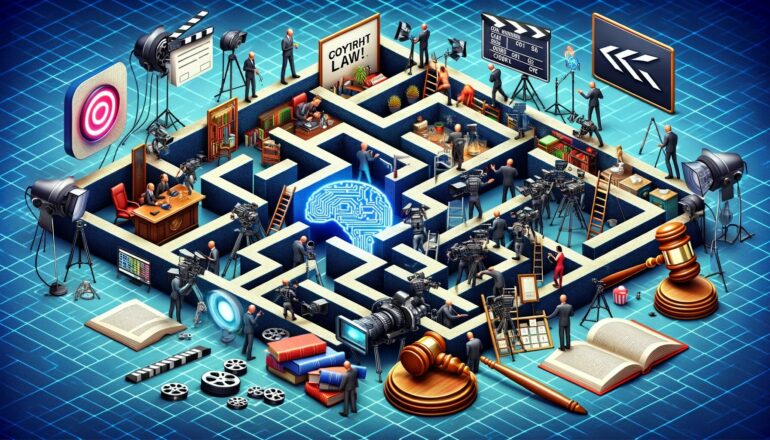WRITTEN BY: Per Laursen
AI will soon be an integrated part of every film/TV production, and potential legal pitfalls and conflicts are hidden everywhere.
Artificial Intelligence is advancing at an unprecedented pace in the TV/film production industry, presenting complex challenges not only in technical development but also in copyright law. Nordisk Film & TV Fond's theme year Talent in the Age of AI was launched in January and a survey on AI from the point of view of script writers is on its way.
It is only a matter of time before AI is an integrated part of the toolbox for Nordic TV and film producers. But as AI enters all aspects of the media business, the TV and film industry should watch out for several basic pitfalls in terms of copyright etc.
“Keep a look out for several significant developments,” Head of Gorrissen Federspiel’s Media & Entertainment division, Jakob Plesner Mathiasen, said at the “The Scandinavian Creative AI Summit” in Copenhagen.
"First and foremost, follow the many lawsuits regarding the training of AI services. Have AI services been able to harvest manufacturers' data without permission or does it require agreements and payment? In the US, several cases on the issue are pending – including the NY Times case against OpenAI. In addition, new legislation is on the way. For example, there is a focus on the upcoming AI Act, just as there is a focus on the regulation of deep fakes and actors' rights,” Plesner Mathiasen said, adding that the Danish Ministry of Culture is introducing an AI focus group to identify the problematic areas.
A significant hurdle remains: Today’s copyright law does not quite take into consideration that moving pictures with actors can now be created and reused.
"Only in part. According to Danish jurisprudence, there is protection against others using one's name, image, and voice. But there is no real law on this. This makes the legal position a little unclear. And the intensive exploitation involved in AI, which can make 100% true-to-life recreations of humans, has not been considered,” Plesner Mathiasen told NFTVF, adding:
“In the case of deceased persons, the legal position is even more unclear. For how long is the deceased protected from being digitally resuscitated? Abroad, there have been cases involving Einstein and Marilyn Monroe. But there is a lack of clear legislation."
The industry has no idea how AI will develop in one, two, or five years, but producers and production companies etc. can focus on and identify the source of the most probable conflicts and economic woes.
"Potential problems hide in different places. First, in the relationship between right holders and AI services. Should right holders be compensated for the use of their material? This will be the crucial question. Secondly, potential conflicts between actors and producers could also arise. To what extent can AI rights be transferred to the producer, and what should the compensation models look like? In “the old days", if a person were to play the role of an extra on a jury in a courtroom drama, they might have to be on set for 10 working days. Now the extras can be scanned digitally, and may have completed their efforts in the course of perhaps 30 minutes,” Plesner Mathiasen said, referring to cases with similar digital issues - for example, a case from the US about the Back to the Future trilogy, where the actor who played the father in the film was in part replaced via digital aids.
A particularly tricky issue is whether a production company or broadcaster can claim copyright on what has been created by AI.
“This is the third key question, as to which extent the output of AI services, such as Sora (new video model developed by OpenAI) can be protected by copyright. Can you get rights to something where your input consists of a prompt? The answer is nuanced, and depends, among other things, on how extensive one's creative efforts have been. But what if the AI services have created the content by copying other people's works?”
Plesner Mathiasen also referred to examples where film producers have recreated deceased actors. This applies, for example, to Princess Leia in Star Wars. Or where living actors have been given a digital facelift (such as Harrison Ford in the recent Indiana Jones film).
More info on the Fund's theme year: CLICK HERE.
